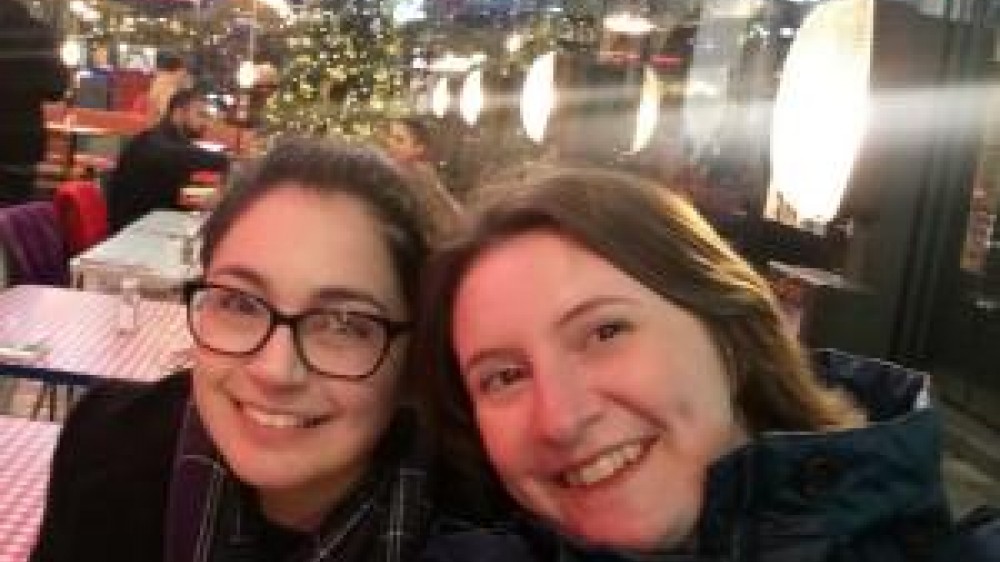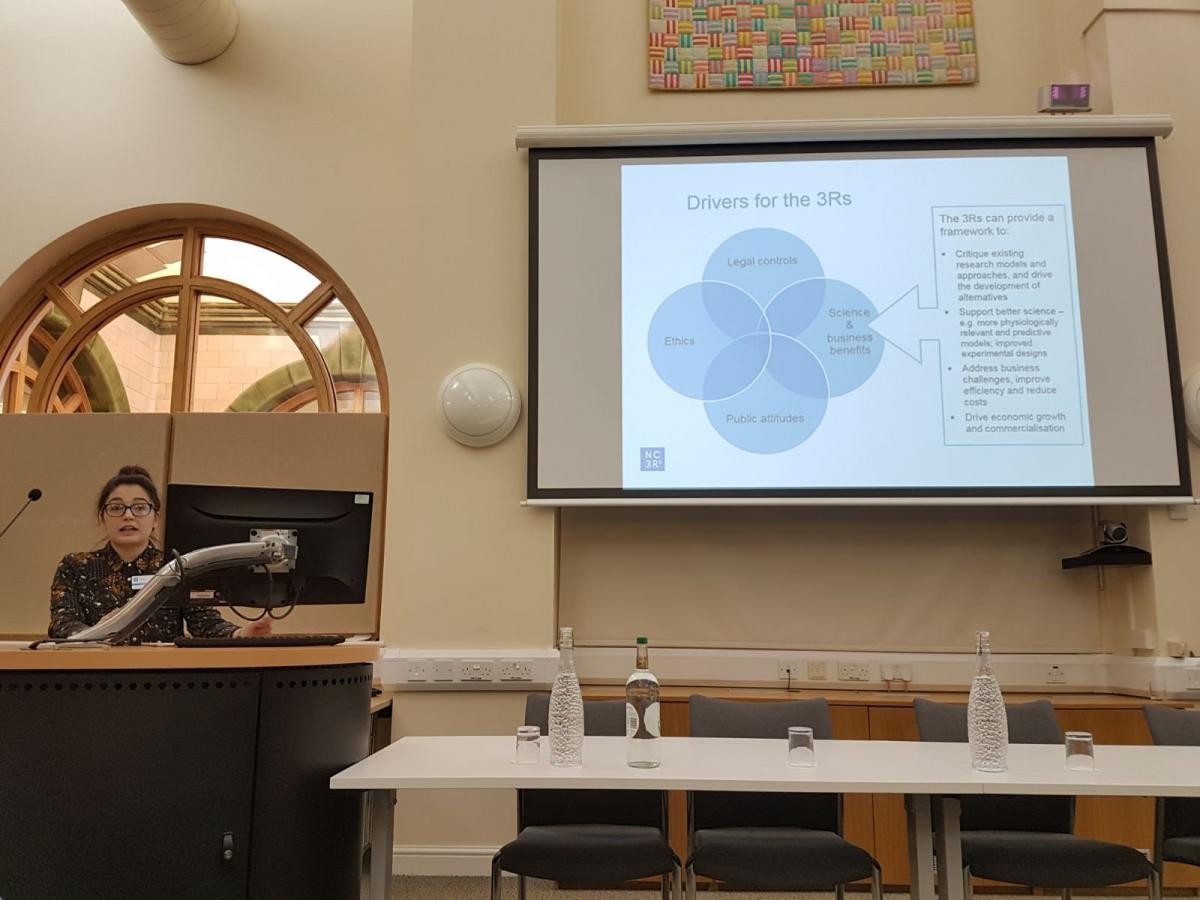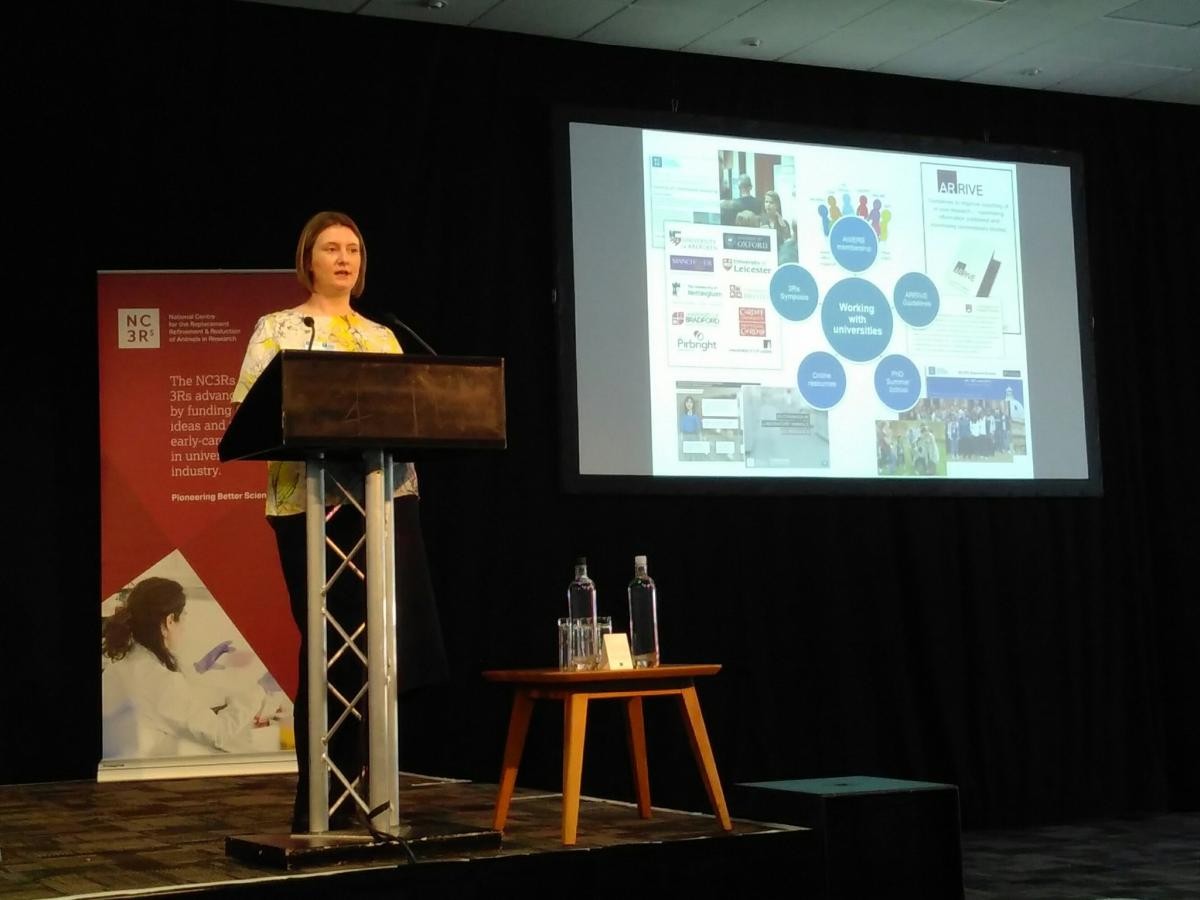Meet the 'locals'! The NC3Rs Regional Programme Managers share their experience

In late 2016 the NC3Rs recruited two Regional Programme Managers, Dr Kamar Ameen-Ali and Dr Emma Stringer.
Kamar's post is co-funded by the NC3Rs and the Universities of Liverpool, Manchester and Sheffield, while Emma's post is co-funded by the NC3Rs and the Universities of Birmingham, Leicester and Nottingham. In this blog post, they share their experience of working with these universities and what it’s like to be an NC3Rs staff member 'on the ground'.
Where did the idea of having regional posts come from?
Kam: The main motivation for the posts came from the interviews the NC3Rs did with key scientific opinion formers for the development of its ten year vision. One of the main themes to emerge was that more could be done to help promote and implement the 3Rs within universities.
Emma: Some of the challenges reported to the NC3Rs included difficulties keeping up with relevant 3Rs initiatives and a lack of time and appropriate structures to support implementation of the latest 3Rs advances. Rather than making it an extra job for researchers or named persons who are already very busy, having a dedicated staff member enables institutions to apply the 3Rs to day-to-day work more efficiently.
What is your background, how did you come to work in this role?
Emma: I did my PhD at the University of Leicester, where I stayed in post-doc positions for eight years, eventually becoming a research fellow and leading a number of research projects in cardiovascular research. I gradually became disillusioned with the academic career pathway and started looking for a role that would still be research-related while playing to my strengths such as project management. I have always enjoyed sitting on AWERBs and being involved in the local 3Rs-related activities, so when this role came up, it was an ideal opportunity for me.
Kam: I was an NC3Rs-funded PhD student, in the area of neurobiology and behavioural neuroscience at Durham University. This meant that from the very beginning of my scientific training, I was encouraged to actively embed and apply the 3Rs to my research. I stayed engaged with the NC3Rs during my post-doc position at the University of Sheffield. I enjoyed working in academia, but this job came at the right time and similarly to Emma, it seemed well suited for me because it was all the things that I liked about research, just without the lab work.
What does the role involve?
Kam: Some of our activities vary depending on institutional needs, but other activities are common across all the universities. Since these are completely new posts, when we first started, we focused on increasing our visibility so that all the animal facility staff and researchers would know what our role is about and we could get a better idea about initial priority areas.

We give lots of talks to introduce people to the NC3Rs and what we do and the support we can provide. We organise regional 3Rs symposia involving each institution to showcase good 3Rs work locally, as well as arranging more focused events on robust experimental design, applying for 3Rs research funding, or other topics that we have identified as important.
Another big part of the role is working with individual researchers providing bespoke support for project licence and grant applications. For project licence applicants, we typically help to identify opportunities within their projects to implement the 3Rs, refinements in particular, and also advise on the 3Rs sections of the licence application form. For grant applications with in vivo work, we advise on the use of the Experimental Design Assistant (EDA) to demonstrate that an efficient experimental design has been proposed. If the application is for submission to an NC3Rs funding scheme, we can advise whether the project is within remit, whether it has the potential to be competitive, and how it can be strengthened.
Emma: While some of the work is more structured, we also have many ad hoc tasks. We visit each university weekly, usually on a set day, which helps us to establish good relations with staff, and ensures we can have face-to-face meetings. People know that they can come and have a chat with us, even if something has only just come up that week. Our doors are always open! And in between visits, we can be contacted by email or phone.
What is your favourite part of the job? What are the main challenges of the job?
Emma: The initial challenge was to get to know each university, its infrastructure and the internal organisation. At each establishment we have key senior contact points – an academic lead and an animal facility lead – who have been fantastic in ensuring that we establish the right networks and contacts across departments. Building the right relationships and making sure that everyone understands that we are there to support the university’s commitment to the 3Rs has been essential to effective working.

Kam: The job is really varied and that in itself can be quite challenging. Even within a day the work can vary a lot – I can go from meeting a PI to help create and critique an experimental design diagram in the EDA, to then meeting a technician to train them on how to use refined mouse handling techniques. We have to be aware of all of the NC3Rs work programmes (and there are lots of them!). Of course we cannot be an expert in every area of biomedical research so it really helps that the NC3Rs has such wide expertise to tap into.
Emma: It took some getting used to, and now the variety is something that I really enjoy about the job. No two days are the same! I still feel actively involved in science and it’s great to be in a position where you can contribute to so many diverse and exciting areas of research as well as make a difference to animal welfare.
Kam: This is linked to my favourite part of the job, which is getting to know people’s different research areas; I think that is really interesting. It’s also fantastic to see how receptive people can be, to see a shift in awareness and practices, and how willing people are to recognise the need for good experimental design, improved animal welfare and how that can all link to good science. I also really enjoy being able to advise people on grant applications, because I find that researchers are genuinely grateful to get help in this highly competitive process. I personally find that really rewarding.
How do you work remotely?
Kam: We are typically at our designated universities one day a week, although this can increase when we are running workshops for example. Then on the other days we either work from home or at the London office. Most of the time we ‘hot-desk’ in communal offices at each university. Even though we don’t share an office, Emma and I talk regularly, because we are in the same situation and we understand the demands of this role.
Emma: I agree, it’s great to have Kam there! That said, the university staff are very approachable and friendly and I always feel welcome and that my advice and support is valued. As for working with my colleagues in London, we attend events and meetings in person when we can, or use tele- and video-conference facilities. It helps that often we are not the only ones in the team working remotely, and plenty of discussions happen via email.
My big concern about working remotely was the fact that our jobs involve quite a lot of travel, and I have a young family. The NC3Rs team works really hard but there is a good understanding of the importance of a work/life balance and a strong team dynamic so in reality I needn’t have worried.
From the hosting institution’s perspective, what are the added benefits of collaborating with the NC3Rs?
Emma: The big advantages for the universities are the access to dedicated 3Rs expertise and the more direct link to NC3Rs networks; whatever the 3Rs question is, if we don’t know it, we most likely know somebody that will be able to help.
Because we share best practice within our own institutions, but also between us (when it’s not confidential), it makes life a lot easier. Sometimes even if a lab or facility recognises that there is a problem or wants to do something differently, they might not know where to start, or they are not aware of what has been tried by others. We can fill that missing link, provide staff with advice or put them in touch with others who can help. This means that local 3Rs initiatives get actioned much more quickly, benefitting not just the animals but also from a business point of view, if you can get it right straight away, you’re not wasting time and resources that someone has already tried and failed.
Kam: That’s true, sometimes Emma emails me with a question, and within a day we have connected groups to resolve their issues or even establish collaborations. We enable researchers to more easily engage with the 3Rs. By collaborating with the NC3Rs in this way, the institutions are making a clear statement that they are actively committed to improving how they do animal research and to being at the forefront of innovative methods and technologies that can advance the 3Rs.
What are the benefits to the NC3Rs for having someone in the universities?
Kam: There are lots of important benefits for the NC3Rs. We can ensure that researchers and animal care staff use our resources maximising their impact, we can help identify research with 3Rs implications where the PI might not have thought about other opportunities for exploitation, and we can identify trends that can help inform the wider work of the NC3Rs.
Emma: Working directly with the institutions helps to encourage grant applications from people who hadn’t considered applying to us before, giving us even more opportunities to fund excellent 3Rs work and expanding the number of scientists engaged in 3Rs research.
We have also developed an extensive network of contacts which comes in very useful when we are looking for speakers for our national events, working group members and peer reviewers for grant applications.
What impacts have you seen?
Emma: It has taken about 12 months in the role to start seeing the impacts but I have certainly seen demand for my support increase over this time. One impact I am really proud of is the refinement in rat care that I recommended including the use of play pens. I am also now seeing grants awarded where I have given advice on the application, which is very encouraging. For example, Scott Davies, who attended our annual PhD Summer School (by invitation, because he was a PhD student in my ‘region’ – University of Birmingham) has subsequently been awarded a Training Fellowship.
Kam: I agree, seeing successful grant applications is a clear and easy to measure impact, and in the last 12 months I have seen fellowship and project grants awarded to the universities I cover. We are also seeing a locally increased use of NC3Rs resources such as the ARRIVE guidelines for reporting animal experiments, and the EDA website. The success of the 3Rs symposia I organised at each of the universities I work with was a real buzz too, with great attendance and feedback and lots of follow up activity.
I have also found it really stimulating to work with the animal technicians on implementing refinements such as the tunnel mouse handling methods. Some technicians were a bit sceptical initially, saying ‘I’m willing to give it a go but I’m not that sure if it will work’. Many of them are now completely on board and it is very exciting to be working with them to look at how we roll this out across the university.
What's next for the regional programme?
Kam: We’re currently recruiting for two new posts to work with the University of Oxford and with the GW4 Alliance group of Bath, Bristol, Cardiff and Exeter universities. We’re also in discussions with other universities around the UK who are also keen to have posts. It’s an exciting time because the larger the collaborative network, the greater the 3Rs knowledge exchange and impact.
Emma: I’ve been leading the development of a 3Rs self-assessment tool for higher education institutions, and another for individual research groups. These online tools will enable universities and labs to benchmark how they are doing on the 3Rs and to track their progress over time, with suggestions for improvement. The aim is to launch the tools later this year, so something new to look out for.
